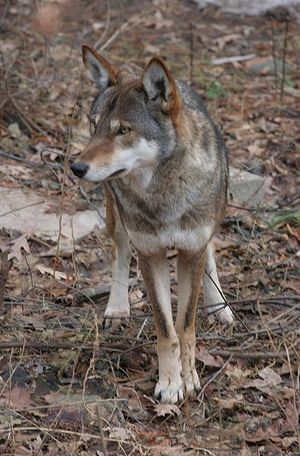The werewolf, at its most basic, is a man that can change into a wolf. The wolf is often vicious, possessed of human cunning with the strength, speed and killing potential of a savage predator. Werewolves, generally, are tougher than regular wolves and they may have to be killed by special means. However, beyond these few similarities, the werewolf legends from around the world are all quite different from each other in specifics while very similar to each other in substance. Just a few of the more prominent historical examples can be found below.
Perhaps the oldest recorded werewolf legend is the story of King Lycaon. In Ancient Greece Zeus went among men in the country of Lycaon and revealed himself as a god. Lycaon didn’t believe that Zeus was who he said, so he invited the god to attend a banquet at which Lycaon was serving human flesh. Zeus of course saw through the ruse and discerned what the meal was. As a punishment Lycaon was turned into a wolf, a form that was perhaps more appropriate for indulging in the eating of human flesh. The ill-fated king is where the term lycanthropy, meaning specifically a werewolf, came from.
Another myth for werewolves was recorded in the Saga of the Volsungs, one of the Icelandic sagas passed down and finally written by the Vikings. According to the saga men who wore the skins of wolf, pelts that may be cursed, would become wolves. Two Volsungs, father and son, wore the skins of wolves and could not remove them for months. This was a common myth in the North, and it lead to the idea of a wolf belt, a belt made of wolf hide that would transform the wearer into a wolf. Another Norse version of the werewolf were the terrifying warriors among the Vikings known as the Berserker. Berserker, which came from the idea of “bare shirt,” meaning that the warriors wore no armor or may have been nude, were fighters of terrifying strength and savagery, who were said to transform into beasts when they fought. Bears and wolves were common animals named, the latter because wolves would mark warriors chosen by the Norse god Odin.
A historical werewolf event, one which was made into a film entitled “the Brotherhood of the Wolf,” is about the Beast of Gevaduan. This animal was responsible for killing sheep as well as for murdering French peasants. This animal, which various theories have said may have been a werewolf, a lion or a hyena, gained the eventual attention of the French king who sent government hunters to kill it. A silver bullet was rumored to be used, though no records from this encounter have survived to this day from the 1700’s.
Other myths tend to share aspects with these big three. Werewolves are supernaturally strong and tough, and they may even change into other creatures. As Christianity marched onward werewolves were eventually associated with devil worship and witchcraft, with warlocks and witches transforming themselves into beasts to commit heinous acts. However, things like the moon creating a werewolf’s shifting, a man only shifting into a hybrid physical form, and even the use of silver are often more a product of Hollywood than the actual myths the movies draw on.
“Werewolf Legends,” by Anonymous at Think Quest
“Werewolf,” by Anonymous at Monstropedia
“Werewolves- Lycanthropes,” by Anonymous at Mythical Realm






